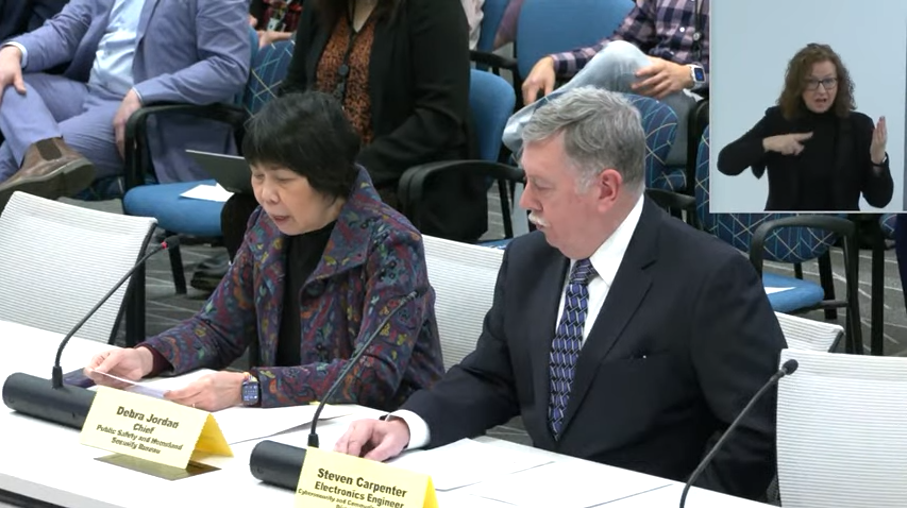FCC Addresses Accessibility Gaps in Emergency Alerts in February Meeting
The agency also introduced regulations to simplify consumers revoking consent for robocalls.
Jericho Casper

WASHINGTON, February 15, 2024 – The Federal Communications Commission took steps to enhance the accessibility of emergency alerts broadcasted on television and radio for non-English speakers at its Thursday open meeting, citing the tragedy that the majority of those who lost their lives in Hurricane Ida were non-English speakers.
The proposed rules seek to simplify the process for emergency alert managers to disseminate alerts in the 13 most widely spoken non-English languages in the United States, as well as American sign language.
This would be achieved by developing pre-translated alert scripts and prerecorded audio files in non-English languages as an option for initiating alerts in Spanish, Chinese, Tagalog, Vietnamese, Arabic, French, Korean, Russian, Haitian Creole, German, Hindi, Portuguese, and Italian.
While alert originators currently can issue emergency audio and visual alert messages in any language, very few messages are sent in languages other than English. This poses challenges for the 26 million people in the United States who report that they do not speak English very well or at all.
In the proposed rulemaking adopted Thursday, the commission is seeking comments on the feasibility of developing and implementing American sign language versions of the alerts, including how the ASL translations should be processed and displayed.
During its February meeting, the commission unanimously approved two proposed rulemakings and two orders, all of which are now open for public comment for a period of 30 days.
Facilitating in-space servicing, assembly, and manufacturing
The agency also proposed a new licensing framework for space stations that will support in-space servicing, assembly, and manufacturing activities, or ISAM, a growing part of the space economy.
ISAM refers to a range of in-space activities, from repairing and refueling satellites to assembling whole new systems in space.
“It can even include systems for the manufacturing of new parts, products, or infrastructure in orbit. Plus, it can help with space sustainability through the development of technologies to capture and remove orbital debris and assist with reuse and recycling of in-orbit systems,” FCC Chair Jessica Rosenworcel said, during the open commission meeting.
Part of its space innovation agenda, the commission is proposing changes to its part 25 rules to support the development of these space activities.
Thursday's action builds on an inquiry adopted in August 2022 to open a proceeding on ISAM-specific licensing needs, and furthers the goals of the federal ISAM national strategy.
As the ISAM industry continues to develop, the commission envisions taking additional steps as needed to foster innovation and growth in this field.
Empowering consumers to stop unwanted robocalls and robotexts
The commission unanimously approved new rules to make it simpler for consumers to withdraw consent from unwanted robocalls and robotexts, mandating that callers promptly comply with such requests within a 10-day period.
The measure formalizes the commission’s 2015 ruling, affirming that consumers have the right to revoke consent under the Telephone Consumer Protection Act using any reasonable method.
Additionally, it integrates the commission's 2012 decision into FCC regulations, clarifying that a solitary text message confirming a consumer's opt-out request does not breach the TCPA, as long as the confirmation solely acknowledges the request and contains no promotional content.
The commission invites further input on whether the TCPA covers robocalls and robotexts from wireless providers to their own subscribers, and whether consumers should have the option to revoke consent and halt such communications.
New wireless microphones make more efficient use of spectrum
The commission also adopted rules to allow a new wireless microphone technology to operate.
Wireless multi-channel audio systems make more efficient use of spectrum than currently available narrowband microphones, meaning more microphones can be used without allocating more airwaves. The new rules will permit WMAS to operate on a licensed or unlicensed basis, while preserving the existing spectrum rights of others that share those frequencies.
“Under the rules we adopt here, three times as many microphones can operate while putting the same amount of power over the air as a single wireless microphone has under our past rules,” Rosenworcel said.
These devices operate in a mix of licensed and unlicensed airwaves like the 600 MegaHertz and 900 MHz bands, as well as the 1.4 GigaHertz and 7 GHz bands. These airwaves are shared with a range of other wireless services, including broadcasting, aeronautical activities, Wi-Fi and other unlicensed technologies.
The new rules will allow WMAS to operate in the broadcast TV bands and 600 MHz duplex gap on both a licensed and unlicensed basis, and in other Part 74 LPAS frequency bands on a licensed basis.











Member discussion